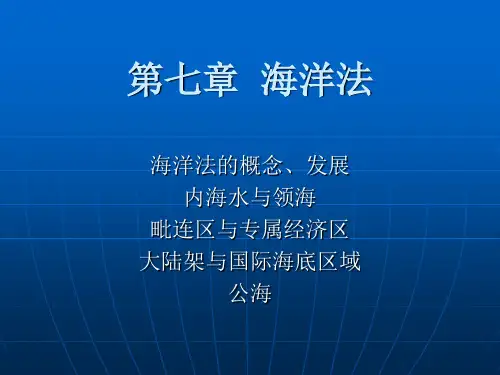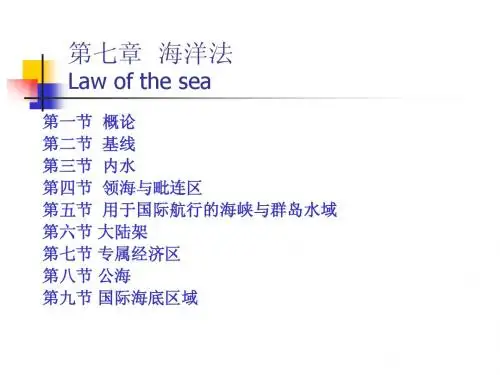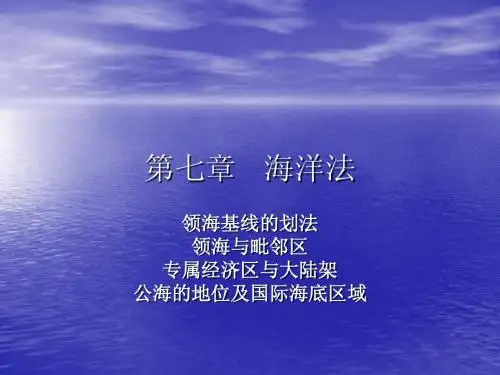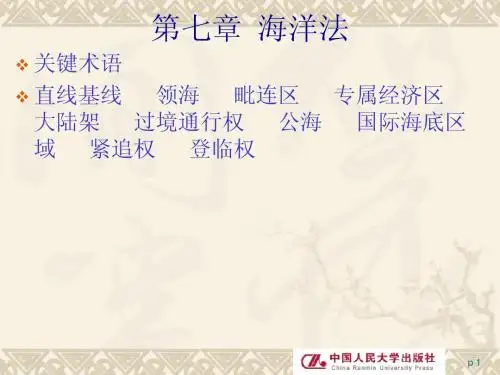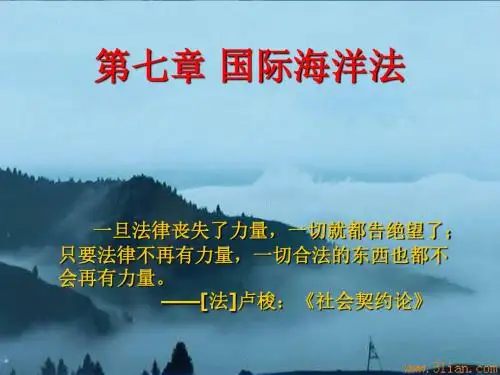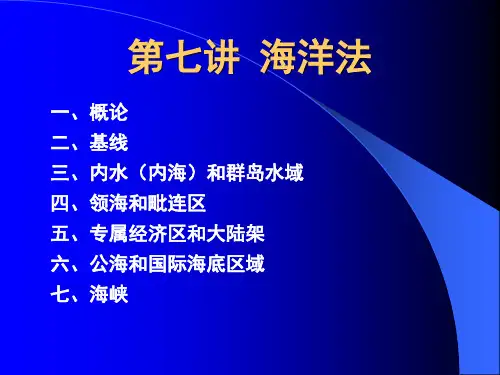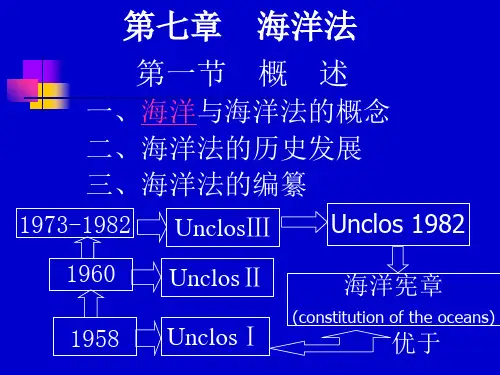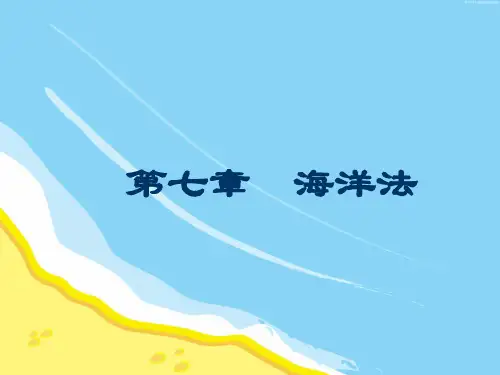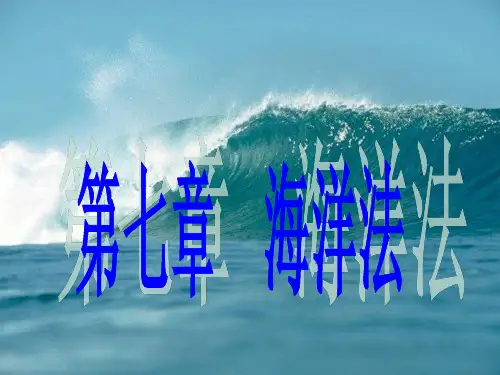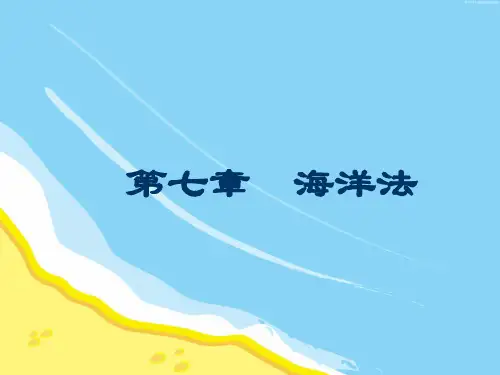1、ships of all States, whether coastal or land-locked, enjoy the right of innocent passage through the territorial sea. (沿海国、内陆国的船舶均享有无害通过权)
3、“通过”: 是指继续不停( continuous)迅速( expeditious)地 驶过领海,包括: 为了穿过领海而不进入内水,或为驶往或驶出内 水而通过领海。 2、“无害”: 是指不损害沿海国的和平、良好秩序或安全。 (反向举例,116页)
评价:
没有解决领海的宽度问题。
(二)第二次海洋法会议:(1960年日内瓦) 会议的主要议题: 解决领海的宽度。 评价: 各国存在重大分歧,未获任何结果。
(三)第三次海洋法会议:(1973-1982年纽约) 制定《海洋法公约》(1994年生效)
'UNITED NATIONS CONVENTION ON THE LAW OF THE SEA'
直线基线的限制: 1.基线不应明显偏离海岸的一般方向。 2.基线内海域必须充分接近陆地领土,使其受内 水制度支配。 3.不能致使另一国领海同公海或专属经济区隔断。
Article7 3. The drawing of straight baselines must not depart to any appreciable extent from the general direction of the coast, and the sea areas lying within the lines must be sufficiently closely linked to the land domain to be subject to the regime of internal waters. 6. The system of straight baselines may not be applied by a State in such a manner as to cut off the territorial sea of another State from the high seas or an exclusive economic zone. 3. 直线基线的划定不应在任何明显的程度上偏离海岸的一般方 向,而且基线内的海域必须充分接近陆地领土,使其受内水制度的 支配。 6. 一国不得采用直线基线制度,致使另一国的领海同公海或专属 经济区隔断。

